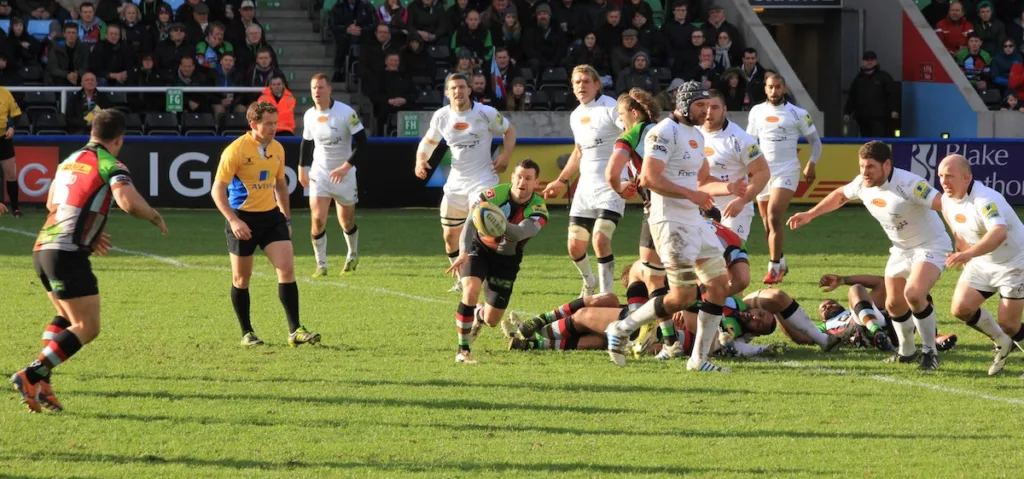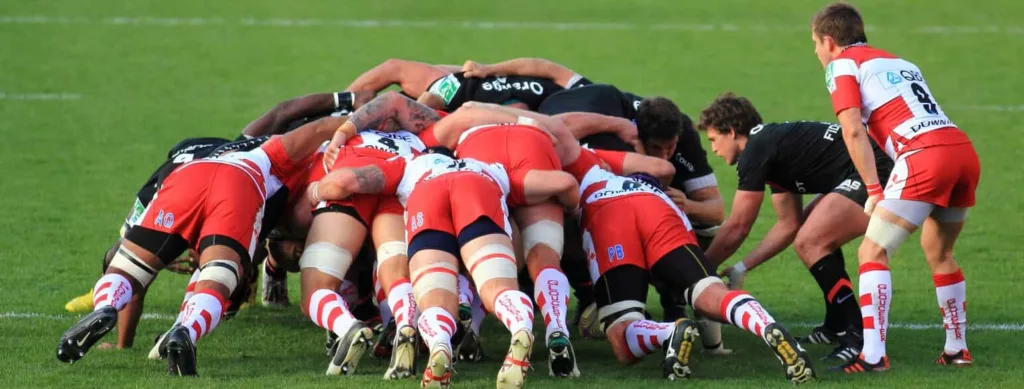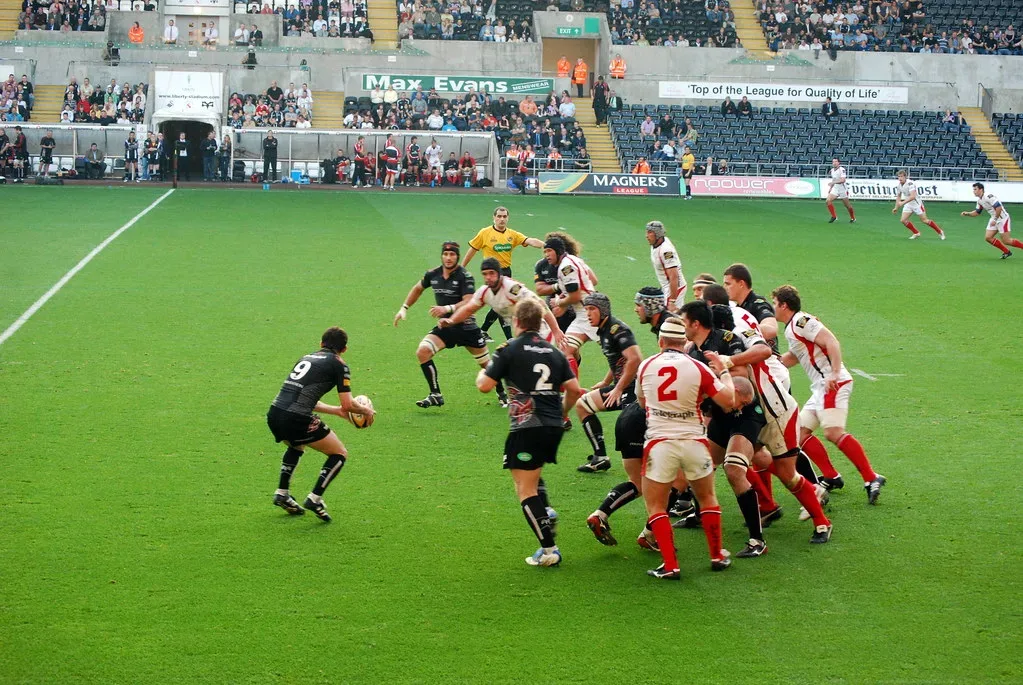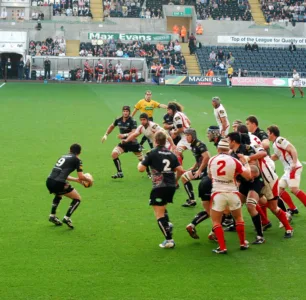A scrum half is a rugby union position. The scrum half is the player who receives the ball from the scrum and is responsible for directing the attack, distributing the ball to the backs, and providing quick ball for the scrum. They play a crucial role in the game, often acting as the link between the forwards and the backs.
What are key skills for scrum halves
A scrum half must possess several key skills, including:
- Passing accuracy: The ability to accurately pass the ball to the backs is crucial for the scrum half.
- Decision-making: A scrum-half must be able to make quick and effective decisions on the field, both with and without the ball.
- Agility and mobility: Scrum-halves must be able to move quickly and evade defenders.
- Vision: A scrum-half must have good field vision to spot gaps in the defence and make accurate passes.
- Speed and endurance: The position requires high levels of physical fitness and the ability to maintain speed throughout the game.
- Game awareness: Scrum-halves must be aware of their team’s tactics and be able to communicate effectively with the forwards and backs.
- Tackling: The scrum-half is often called upon to make tackles and provide cover defence.
- Scrumming technique: The scrum-half must have a good understanding of the scrumming laws and technique to be able to effectively receive the ball from the scrum.
What makes a good scrum half

A good scrum-half should possess the following traits:
- Leadership: They should be able to effectively communicate and direct the team, especially during crucial moments in the game.
- Vision: A good scrum-half has an excellent understanding of the game and is able to anticipate play, spot gaps in the defence, and make quick decisions.
- Passing accuracy: They must have the ability to accurately pass the ball to the backs, keeping the flow of the game moving forward.
- Game intelligence: Good scrum-halves have a deep understanding of the game and are able to make smart decisions in pressure situations.
- Speed and agility: Scrum-halves must be able to move quickly and effectively evade tackles.
- Endurance: They must be able to maintain their speed and physical performance throughout the game.
- Technical skills: Good scrum-halves have a sound understanding of the scrumming laws and technique, allowing them to effectively receive the ball from the scrum.
- Mental toughness: A good scrum-half should have a strong mental fortitude and the ability to stay composed under pressure.
How does the scrum half start a scrum
In rugby union, the scrum-half is responsible for starting a scrum. This involves the following steps:
- Assembling the players: The players from each team form a tunnel with their legs, interlocking their arms, and lowering their heads, creating the “scrum.”
- Tossing the ball in: The scrum-half rolls the ball into the tunnel formed by the players, aiming to place it between the two sets of feet.
- Binding to the scrum: Before the ball is in the tunnel, the players bind together to form a solid unit, pushing against each other.

It’s important to note that the scrum-half must wait until the scrum is set and stable before they can feed the ball. If they attempt to feed the ball too early, they may cause the scrum to collapse, resulting in a penalty.
When does a scrum half box kick
A scrum-half may choose to perform a box kick, in several different situations during a rugby union game. The purpose of a box kick is to clear the ball out of their own half and to put pressure on the opposition’s defence. Some common scenarios where a scrum-half may opt to box kick include:
- To relieve pressure: If the opposition is applying intense pressure and the scrum-half feels that their team is in danger of losing possession, a box kick can provide a safe and effective means of clearing the ball from the area.
- To gain territory: If the opposition is deep in their own half, a well-placed box kick can put them under pressure and give the kicking team the opportunity to regain territorial advantage.
- To disrupt the opposition’s attacking play: If the opposition is building momentum and attacking, a box kick can be used to disrupt their flow and put them on the back foot.
The scrum-half must have good kicking skills, including accuracy and distance, to effectively execute a box kick. Additionally, their team must have good communication and positional awareness, to be in the right place to contest the high ball and regain possession.
Who are the best women scrum halves
It’s difficult to determine the “best” female scrum-halves as rugby is a sport with many talented players and performance can vary based on many factors such as current form, injuries, etc. However, some of the most notable female scrum-halves in recent years include:
- Kendra Cocksedge (New Zealand) – widely regarded as one of the best scrum-halves in the world and a key player for the New Zealand women’s rugby team, the Black Ferns.
- Katherine Downes (Australia) – an experienced and talented scrum-half who has represented Australia at several international competitions, including the Women’s Rugby World Cup.
- Leanne Riley (England) – a quick and elusive scrum-half who has been a key player for England, helping them win the Six Nations tournament on multiple occasions.
- Ailsa Hale (Wales) – a creative and dynamic scrum-half who has been a key player for Wales, helping them secure several victories in international competitions.
These are just a few examples of the many talented female scrum-halves playing the game at the highest level. It’s worth noting that rugby is a sport with a deep pool of talent, and there are many other players who are also deserving of recognition.
Are scrum halves big?
Scrum-halves in rugby union can vary in size and build. While some scrum-halves are larger and more physical, others are smaller and more agile. It’s important to note that size is not the only factor in determining a player’s ability to play the position, as many other skills and attributes, such as speed, vision, passing accuracy, and decision-making, are also critical.
In general, scrum-halves tend to be smaller and lighter than forwards, who play in the front row, as the position requires quickness and agility. However, there is no set size or weight requirement for scrum-halves, and players of different body types can be successful in the role, depending on their individual strengths and weaknesses.

